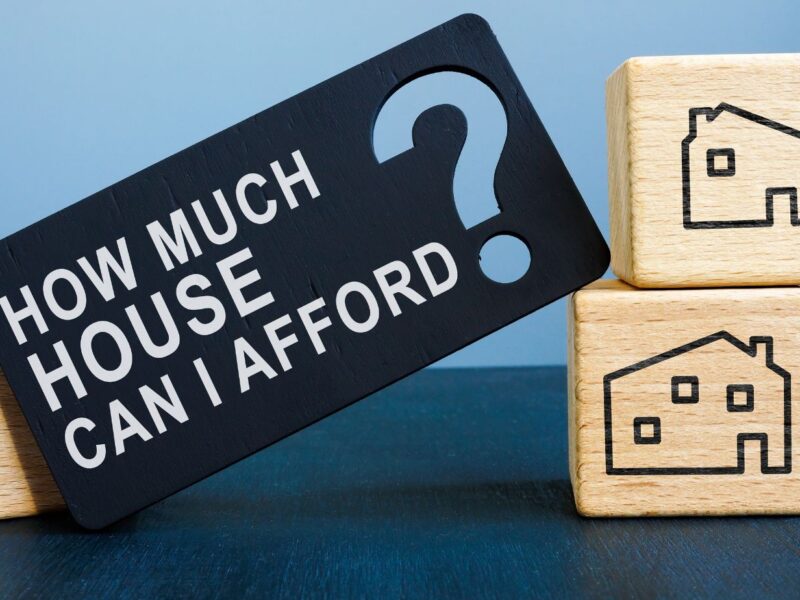If death and taxes are unavoidable, so is paying rent, and it might also be taking a large chunk of your paycheck every month. But how much should you actually be spending on rent? Are you paying too much? Too little (or does that even exist)? We’ll break it down with several key guidelines, budgeting tips, and other important things to consider about paying rent.
The 30% Rule: Is It Still Applicable?
“Spend no more than 30% of your gross income on rent.” This saying has been around since the 1980s and has become sort of the golden rule to gauge what you should be spending towards rent monthly. In essence, if you make $5,000/month pre-taxes, the 30% rule would mean spending no more than $1,500 on rent.
A simple rule, yes–however, it also doesn’t take into account major cities like New York, San Francisco, or even Austin, where $1,500 a month may get you a cozy closet with a “shared bathroom” down the hall. Then there are additional expenses like groceries, loan payments, or maybe some extra money to just enjoy life.
The 30% Rule: When It Works
This rule makes more sense if you earn a steady, reliable income, have minimal debt, or live in an area where rent isn’t already sky-high. If this applies to you, then the 30% rule is a solid way to balance your finances in a true and tested way.
The 30% Rule: When It Fails
Keep in mind, the 30% rule originated in an era when remote work was pretty nonexistent, so if you work remotely and want a bigger space or live by yourself without roommates, there’s no one to split the costs with. If this sounds like you, you might need something more flexible (and contemporary).
The 50/30/20 Method
First introduced in 2006, the 50/30/20 rule has, in many ways, become the new standard in breaking down your finances since it encompasses more than just rent alone. Basically, your income is divided up like this:
- 50%: For needs (rent, groceries, utilities, medications)
- 30%: For wants (streaming services, hobbies, overpriced sugary lattes)
- 20%: For savings (money for future retirement or repaying debt/loans)
Unlike the 30% rule, this method makes sure you’re not overspending on one thing while forgetting about another. That said, if 50% of your income is engulfed by rent, you might need to make some changes or consider something like a side hustle.
The 60/30/10 Model
With the 50/30/20 rule being in practice for some time, economic flux, inflation, and higher living costs brought about the 60/30/10 rule, which allows 60% of income for needs, 30% for wants, and 10% for savings. This model is ideal if you live in a major city like New York, Los Angeles, or Chicago.
One drawback of this newer method is that with only 10% going towards savings, you’re neglecting one of the crucial aspects of any budget plan–savings. However, if you have more time to allocate funds for savings, this model might be a better option, especially if you’re young and in a bigger city with higher costs.
Finding Your Perfect Rent Budget
Everyone’s financial situation is different, so to determine the amount that works best for you, try calculating your income after tax (or “net income”). Write down on paper all the necessary expenses you have (groceries, utilities, transportation, etc.) to see what you have to work with. Figure out what flexibility you have, avoid theoretical numbers like “I think I spend,” and see if there’s enough for rent after covering necessities.
It’s also advisable to try to plan for “what ifs” when it comes to planning out your monthly budget. This allows you to leave some room for unexpected emergencies or other unknowns. Some people in tight spots may even consider short-term options like title loans to cover urgent costs. Don’t forget about savings, either–if all your disposable income goes towards rent, what’s left for the future?
There’s no right or wrong answer; just try not to confuse your wants with your needs. You may have to give in, settle, or make some trade-offs when finding the right place, but often being “too picky” can be more detrimental. To get more of an outside snapshot of overall rental costs, try a rent affordability calculator like this one from RentCafe.
What Should Be Spent on Rent?
Every individual’s situation is different, so there’s really no one-size-fits-all answer, but below is a general guideline:
Monthly Income 30% Rent Budget Max “Safe” Rent
$3,000 $900 $1,200
$5,000 $1,500 $2,000
$8,000 $2,400 $3,000
If your rent takes up more than 50% of your income, it may be time to reevaluate your living situation. However, if you can comfortably afford your place and cover your other financial goals, then most likely, you’re in an ideal spot.
Other Expenses On Top of Rent
Of course, rent isn’t the only cost you must calculate into your monthly budget–several other costs can severely impact the affordability:
- Utilities: Some rentals include utilities, but many others require you to pay for water, gas, electricity, internet, trash valet, clubhouses, and other services. Plus, utilities cost between $150 – $200 per month on average, depending on usage and location.
- Renter’s Insurance: The vast majority of property managers require renter’s insurance, typically running $13 – $27 per month, which protects your belongings in the event of fire, damage, or theft and covers any potential legal issues on their end.
- Security Deposit/Other Upfront Costs: Most property managers also require security deposits equal to one/two month’s rent, while some properties also charge move-in fees, pet deposits, or other application fees.
- Parking/Commuting: If your place doesn’t come with free parking, you’ll most likely have to shell out $50 – $500 or more per month for a parking spot (and you better park in your designated spot or risk being towed on your dime).
- Maintenance/Repairs: While most landlords take care of major repairs, some tenants are stuck paying for minor things like lightbulbs, air/water filters, or other maintenance on appliances.
These many additional costs can quickly tack on hundreds of dollars to your housing expenses, so it’s vital to tally them into your monthly budget before signing the dotted line on any lease.
Get the Balance Right With Paying Your Rent
When it’s all said and done, renting should give you a place to live–not leave you stressed and broke. Whichever budgetary rule you elect to follow, the 30%, 50/30/20, 60/30/10, or just going freestyle, it’s about getting the right balance that lets you get some enjoyment out of life without sweating bullets over your next rent payment.












